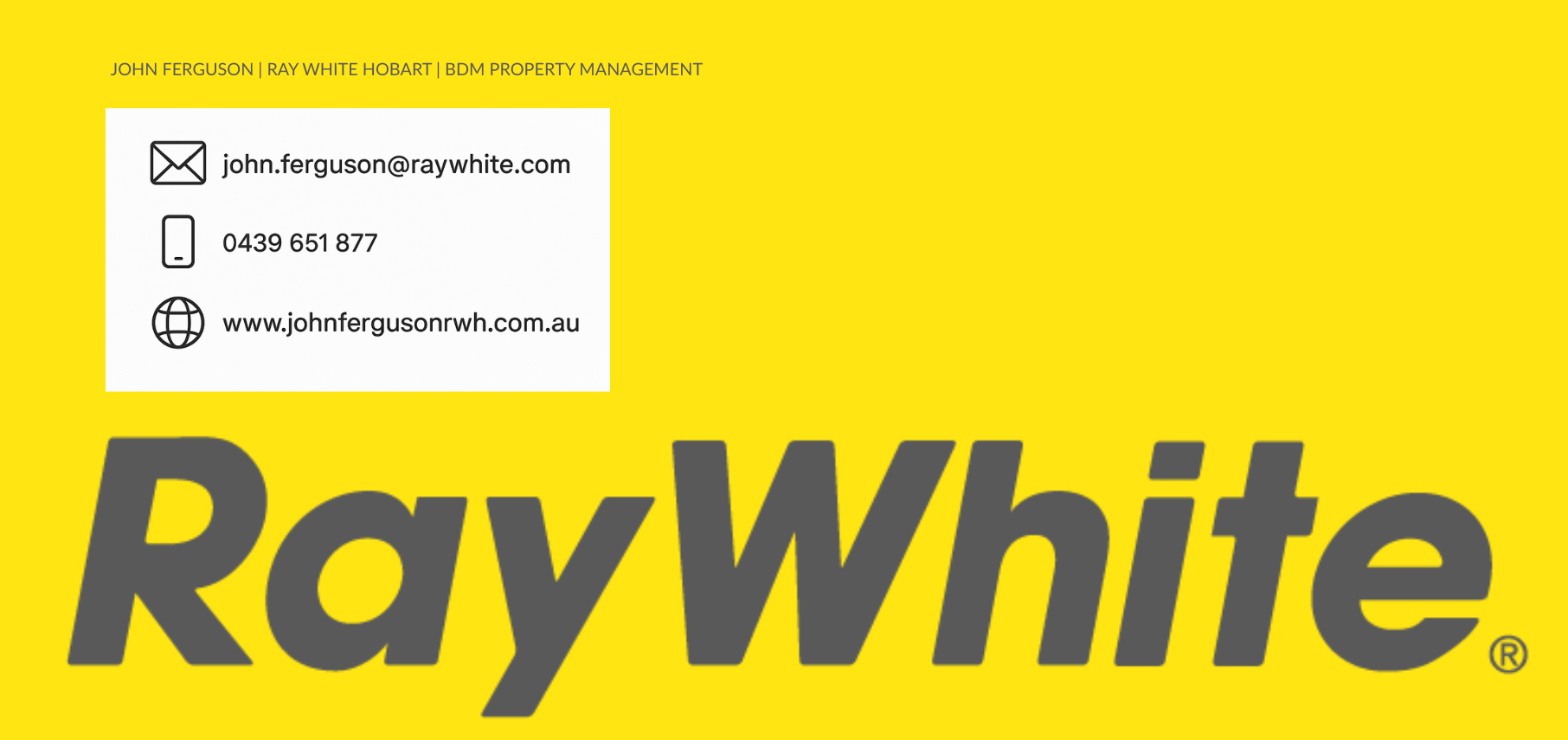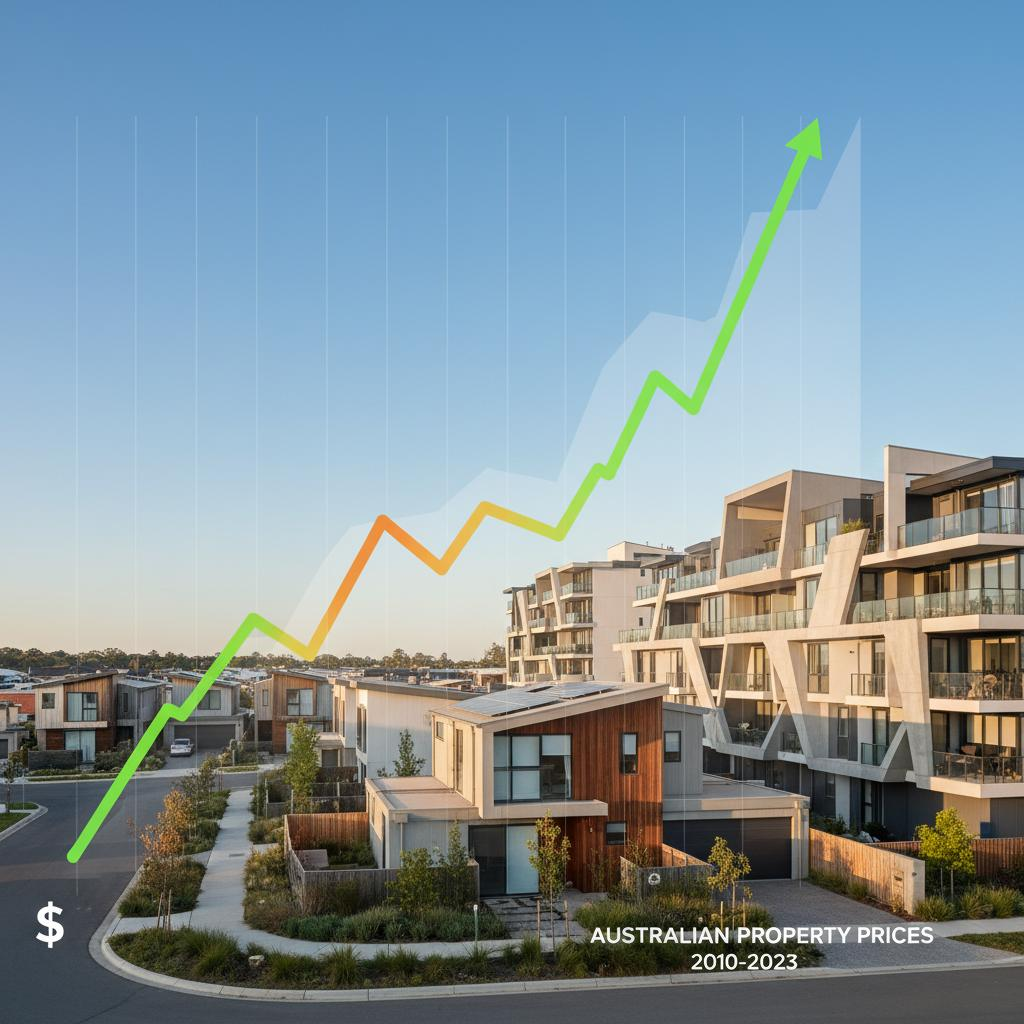The latest median property prices in Australia’s major cities - Including Hobart
Latest Median Property Prices in Australia’s Major Cities: What 2025 Trends Reveal for Buyers and Investors
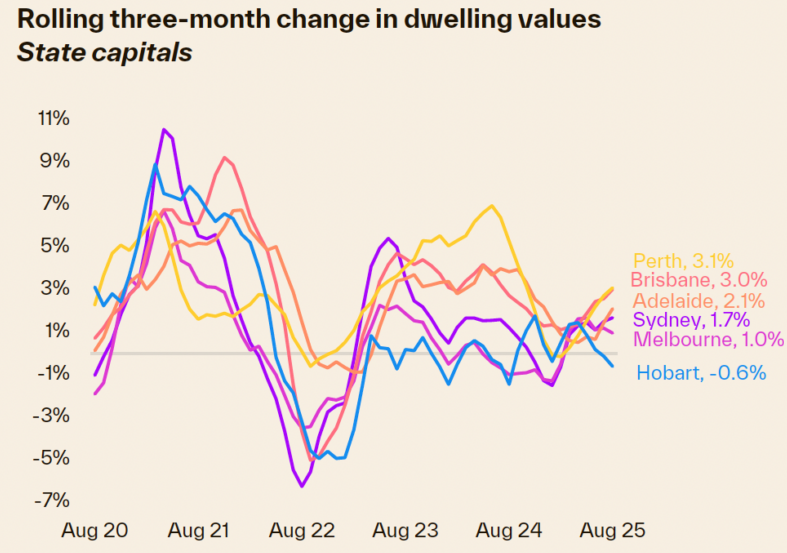
National Property Market Overview: Growth Driven by Mid-Sized Capitals
The most recent statistics show Australia’s national Home Value Index achieving its strongest monthly rise in over a year, climbing by 0.7% in August 2025. This lift contributed to an annual growth rate of roughly 4.1% across the country. What stands out in this cycle is the leadership of mid-sized capitals—Brisbane, Perth, and Adelaide—in driving price gains. Brisbane recorded a 1.2% month-on-month increase, closely followed by Perth at 1.1%, and Adelaide at 0.9%.
The combined median dwelling price for all of Australia now sits near $849,000, with capital cities averaging $932,000 and regional towns around $693,000. These figures, while insightful, should be approached with caution given the diverse nature of markets and housing types across Australia.
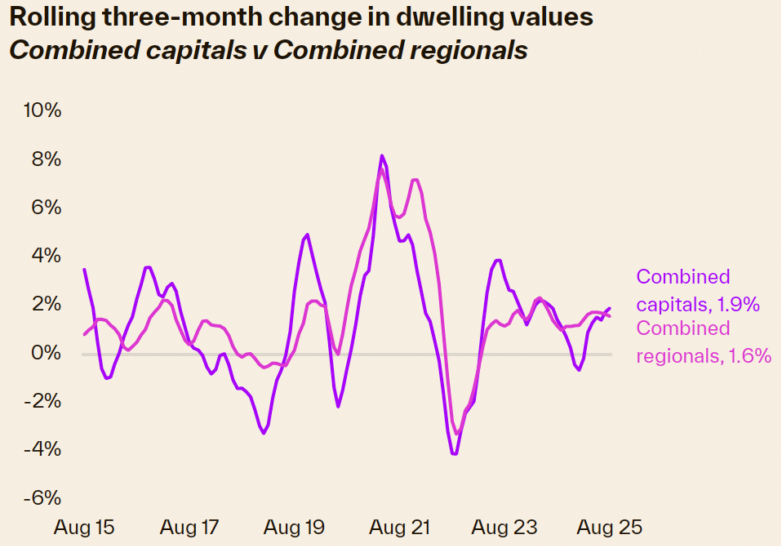
Why Median Prices Don’t Tell the Full Story
Median house and apartment prices are useful indicators but have limitations. For example, Melbourne’s median dwelling price appears lower than Perth or Brisbane, but Melbourne has a significantly higher proportion of apartments, which generally sell for less than houses. In Melbourne, about one-third of dwellings are units, while in Perth and Brisbane, units represent less than 20-25% of the market. This variance impacts median figures, making cross-city comparisons misleading if not contextualized.
Furthermore, median prices are snapshots of recent sales and can fluctuate with changes in the types of properties sold month-to-month or quarter-to-quarter. Markets with heterogeneous housing stock—varying in style, quality, and location—may see median prices move unpredictably, which reduces their usefulness as a standalone metric.
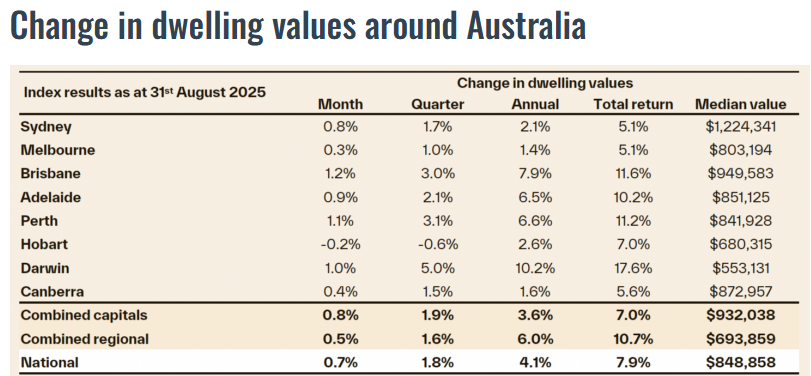
City-Specific Insights: How Each Market is Performing
Sydney
Sydney continues to hold its position as Australia’s most expensive property market, with the median dwelling price passing $1.22 million. House prices have climbed by nearly 3% annually, buoyed by recent interest rate cuts and renewed buyer enthusiasm. The auction clearance rates reflect strong demand, particularly from buyers who delayed purchases during the period of higher rates. Both houses and units are experiencing price growth, though units have flattened in annual terms.
Melbourne
The Melbourne property market has seen more moderate growth, with median house prices around $956,000 and units closer to $623,000. The city experienced slower gains over the past couple of years compared to other capitals, partially due to higher investor uncertainty driven by local government policies and economic sentiment. However, recent months show a positive turnaround with steady price rises, supported by strong immigration and a tightening supply of quality homes. The market is becoming more selective, with demand focusing on higher-grade and investment-grade properties.
Brisbane
Brisbane’s market has been one of the strongest performers nationally, showing nearly 8% annual price growth. Median house prices have soared to over $1 million, with units also appreciating strongly. Population growth, increased demand from both owner-occupiers and investors, and a constrained new housing supply have created upward pressure on prices. The city’s auction activity, traditionally lower than other capitals, is gaining momentum.
Adelaide
Adelaide is experiencing renewed vigour after some early-year stagnation. Median house prices have reached record levels near $907,000, with units also appreciating steadily. Adelaide’s affordability, relative to other capitals, has been a key factor driving buyer interest and competition, although this gap is now narrowing due to rising prices.
Perth
Perth stands out with continued strong monthly and annual price gains, driven by population growth, a tight rental market, and economic activity linked to the mining sector. Median house prices are around $882,000. However, investors should approach Perth cautiously; the market is heavily influenced by fluctuations in the mining industry and momentum from buyers, particularly from the east coast, who sometimes pay prices above local market expectations.
Hobart
Hobart remains the slowest-growing capital city market. Median dwelling prices hover around $680,000 and have seen minor declines recently. While the city experienced a speculative boom in previous years, values are still below their peaks from 2022. Affordability and lifestyle factors sustain some demand but growth remains subdued.
Darwin
Darwin offers the most affordable entry point among capital cities, with median house prices just above $650,000. The city has enjoyed solid growth over the year, supported by lifestyle appeal and low-density living. Investor activity has increased, attracted by relatively high yields and low prices compared to other capitals.
Canberra
The nation’s capital remains relatively steady, with moderate growth in median house prices around $1 million and softer trends in units. Auction clearance rates and overall market activity indicate a subdued market relative to national averages.
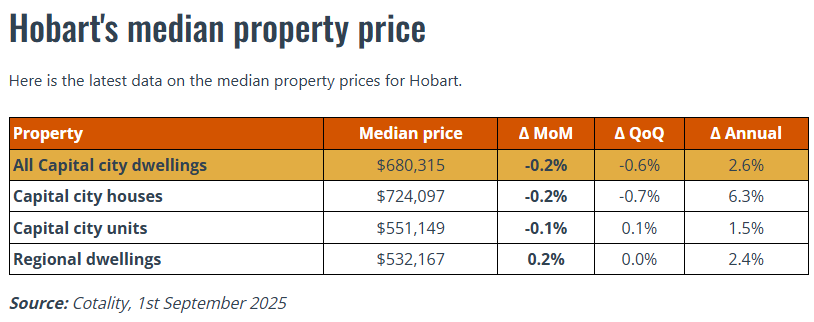
The Impact of Interest Rates and Supply Constraints
Central to the current market trends are the Reserve Bank of Australia’s (RBA) interest rate cuts earlier in 2025. These reductions improved borrowing capacity for many households, boosting buyer confidence, particularly among owner-occupiers and investors who had previously been side-lined by higher rates. Despite this, affordability remains a significant challenge, especially in Sydney and Melbourne, keeping some buyers cautious.
Adding to the complexity is Australia’s ongoing shortage of new housing supply. Construction delays, labour shortages, and rising material costs mean new home completions are not meeting demand, pushing existing home prices higher. In some cities, this supply-demand imbalance is more pronounced, such as Brisbane, Perth, and Adelaide, where tight rental markets further pressure housing affordability.
What This Means for Buyers and Investors in 2025
For those looking to purchase or invest in property this year, careful market analysis combined with local knowledge is more important than ever. Understanding specific city dynamics, supply constraints, and population growth patterns can help identify where value and growth potential lie.
Buyers in Melbourne may find opportunities in higher-quality homes and established suburbs where supply is limited. Brisbane and Adelaide’s markets present attractive growth trajectories but come with rising competition. Sydney remains robust but expensive. Perth’s market offers value if investors weigh the risks associated with its mining-dependent economy.
Engaging a property professional who understands these nuances will assist in making informed decisions that align with your long-term wealth building goals.
Conclusion: Diverse Markets, Opportunity Across Australia
2025 is shaping up to be a year of steady property growth across most of Australia’s major cities, characterized by mixed regional performance and shifting buyer sentiment. While median property prices offer a useful market snapshot, deeper insight into each city’s unique factors is key to navigating the market effectively.
With interest rates now lower and supply shortages persisting, the current environment favours buyers who act with knowledge and strategy, and investors who focus on quality and market fundamentals.
